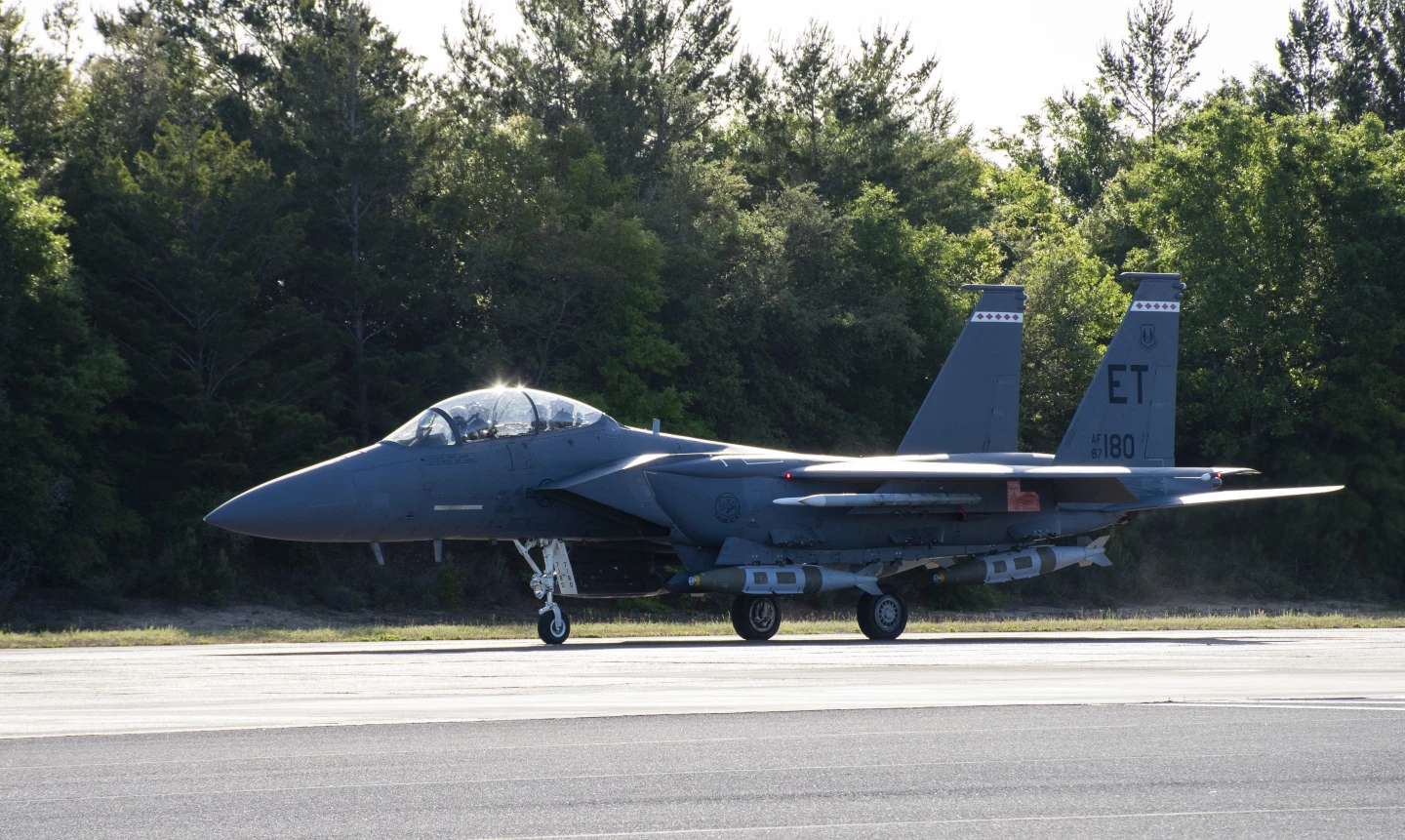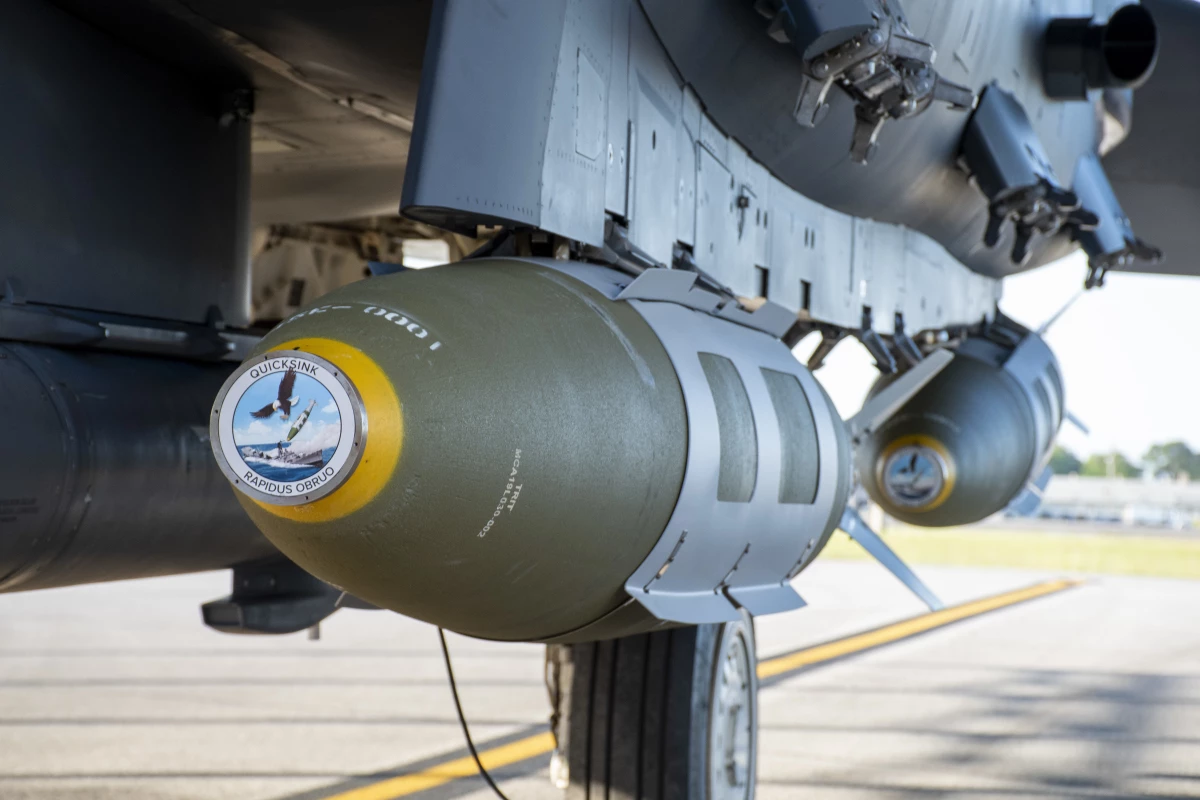The US Air Force Research Laboratory (AFRL) has demonstrated the ability of air-dropped bombs to sink ships with the effectiveness of a submarine-launched torpedo at a fraction of the cost. On April 28, an F-15E Strike Eagle fighter sank a full-scale vessel in the Gulf of Mexico using a single 2,000-lb (907-kg) "Quicksink" GBU-31 Joint Direct Attack Munition (JDAM).
Attacking ships with bombs isn't new. In 1921, US Army Brigadier General Billy Mitchell started a revolution in naval warfare when he staged a test bomber attack that sank a captured German battleship. However, sinking a ship, especially a large one with double hulls and watertight compartments, isn't simply a matter of dropping explosives on the deck, but of placing the charge where it can do the most damage with a single shot.
This is the reason the anti-ship weapon of choice is a submarine-launched heavy torpedo like the US Type 46, which can deliver 96.8 lb (43.9 kg) of high-explosive PBXN-103 to the target. Ideally, the fatal spot is a point directly under the keel, though a slight distance from the hull. When the torpedo reaches this, a magnetic, timer, or remote control detonator sets off the charge and generates a shockwave that breaks the ship's back, sending it to the bottom.

The downside is that submarines aren't always available at short notice and each tin fish costs a sobering US$1.2 million per shot. As an alternative, the AFRL and Eglin Air Force Base's Integrated Test Team set up the Quicksink Joint Capability Technology Demonstration (JCTD) to test a potentially more cost effective and flexible alternative based on the JDAM system.
Put simply, a JDAM is a kit that turns an unguided "dumb" gravity bomb into a guided precision munition. It consists of a collar that goes around the main body of the bomb and a tail unit for guidance that used GPS and an inertial guidance system.
For Quicksink, the JDAM package has been modified with a new seeker unit and Weapon Open Systems Architecture (WOSA) to provide the needed precision to sink a target ship at a cost of only $300,000 per round. In addition, the system would allow for more strikes to be fielded against stationary or moving targets over a much larger area than a submarine could manage in the same timeframe.
"The development of this technology is critical to maintaining US technological superiority and addressing defined national security challenges," said Gerry Tighe, OUSD(R&E) oversight executive for the JCTD. "This successful demonstration represents an important milestone."
The video below shows the Quicksink in action.
Source: AFRL








